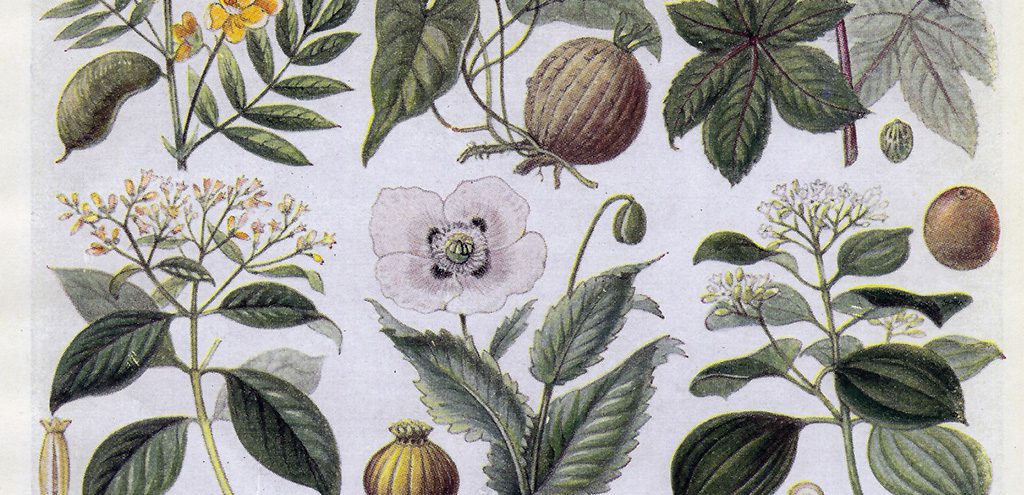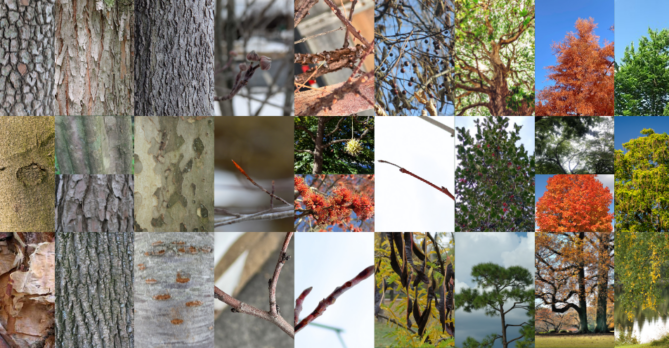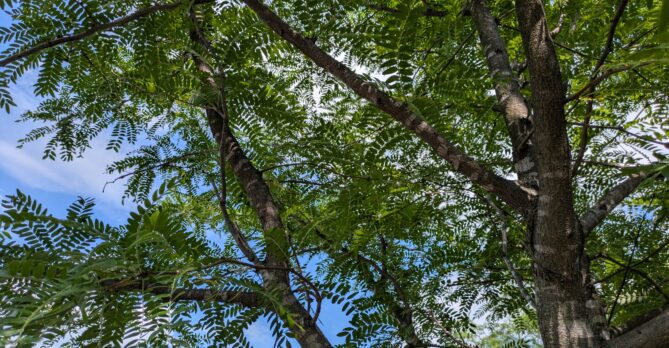
Humans have been harvesting and using trees for medicinal use for millennia. While we have advanced our medical knowledge and understanding greatly, properties of trees continue to be cultivated and prized for generations. To this day medicine from trees, extracted from the wood, bark, roots, leaves, flowers, fruits or seeds is fundamental to the well-being of millions of people. Where access to modern pharmaceuticals is limited, trees offer living pharmacies open to anyone with traditional knowledge on their medicinal properties. The beauty of this is that you probably already know medicinal trees *and* they probably already grow near where you live! You can get some of these and others not mentioned here added to yard (for free! through our residential programs). Check out the full list of trees to add beauty, shade, and maybe even harvestable resources to your property! This goes without saying, but please do not start a medical regime without consulting your doctor.
Ginkgo (Ginkgo biloba)
The ginkgo tree is known for a lot of things – its fan-shaped leaves, its status as a ‘living fossil’, the unfortunate smell of the fruit that female trees produce and subsequently shed, and its ability to withstand harsh urban conditions like soil compaction, pests, disease, salt, wind, cold and drought. Let’s not forget another remarkable feature of the Ginkgo, it’s medicinal properties – the leaves and seeds can be used to ease symptoms of everything from memory loss to dietary problems to asthma – and they can be a nutritious food in moderation.
Hawthorn (Crataegus sp.)
Hawthorn has much lore and a variety of historical uses. The traditional Mayday festival of Northern Europe was, in some places, said to fall on the day the Hawthorns bloomed, May 1. Hawthorn fruits also called “haws”, have also been used traditionally to make jams and jellies. Hawthorn is also prevalent in folk medicine and has been used to counteract high blood pressure, heart failure, and chest pain. Unlike many folk remedies, these effects have recently been substantiated by conventional medical research and marketing of hawthorn extract has followed.
Sassafras (Sassafras albidum)
The sassafras trees does the most: it’s known for its aromatic smell, brilliant fall foliage, three unique leaf types, and lengthy use in food and medicine. There is a well-documented history of Native Americans and colonists utilizing sassafras as a medicinal and culinary addition, and a Spanish physician in 1574 even announced that sassafras was a cure for almost every human ailment! While that may not be the case, its roots and bark were commonly used to create a root beer like tonic and tea from its leaves were touted to treat everything from skin sores to bronchitis to hypertension. You may see sassafras these days as file powder – a key ingredient in Louisiana Creole cuisine, specifically gumbo.
Sourwood (Oxydendrum arboretum)
The sweet nectar and sap of the sourwood led to early colonists and Native Americans utilizing it for a variety of things. It was used as a tonic, decoction, and even as a gum; medicinal uses include treating urinary problems, prostate conditions, diarrhea, dysentery, and many other symptoms. The Oxydendrum arboretum is a little less adaptable to its environment than other urban trees as it is generally intolerant of heavy shade, as well as high soil alkalinity and salinity. It prefers moist, well-drained soils with a balanced pH level that are not compacted. On the other hand, although it attracts some nuisance pests, the sourwood is very easy to care for and has no known major diseases, which is a plus for homeowners.
Witch Hazel (Hamamelis spp.)
Its common name alone invokes an image of magic and cauldrons bubbling full of medicinal potions. Introduced to the U.S. in 1736, witch hazel is a small understory tree with a cult following for the astringent extract collected from its leaves and bark that is said to ease inflammation and soothe sensitive skin. We also love the welcome shock of color as it blooms bright yellow in late February and March.


